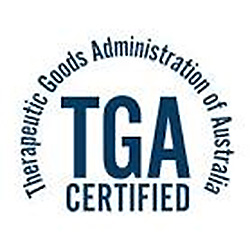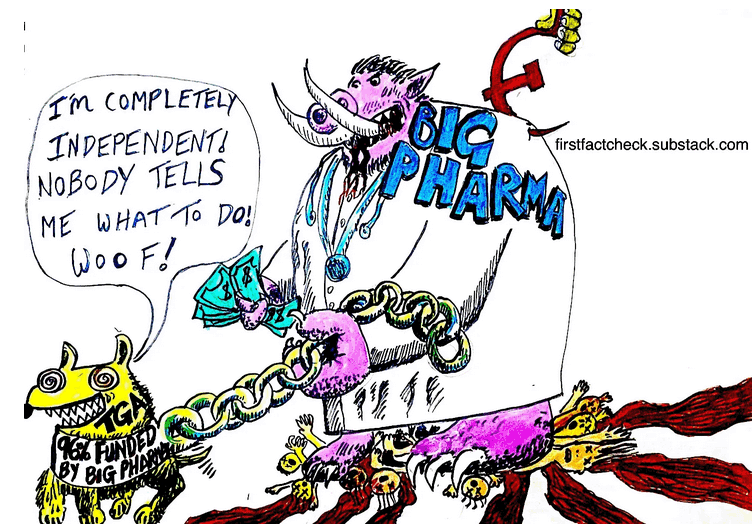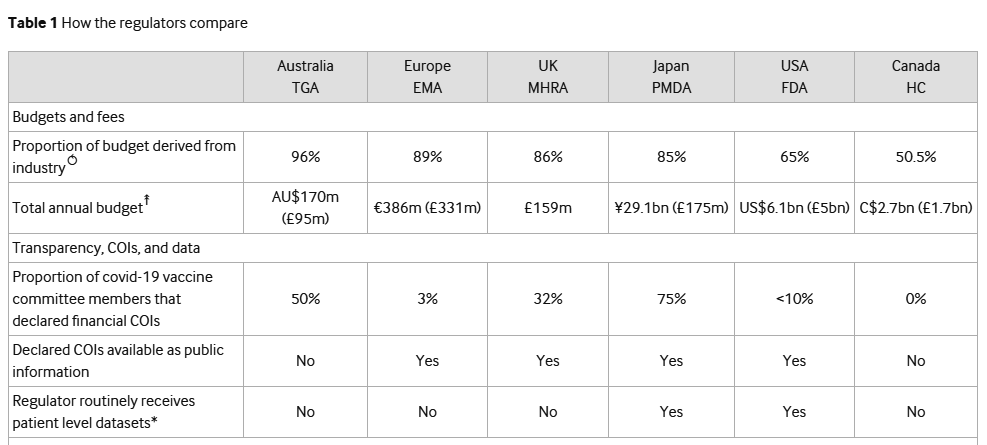The Malhotra-Dowd-Wolf-Shipman event about the Corruption of Medicine in Perth was a smashing success. The crowd of nearly 2,500 was on fire, the speakers were excellent and you can still watch it (and help cover some of the costs) by buying tickets to watch it online. Four hours of some of the best and brightest of humanity.
Fact-of-the-day (for me) was that the Australian TGA (drug approval agency) gets 96% of its budget from the industry it supposedly is a watchdog for. Hello? So when the TGA inexplicably banned the safe ivermectin and hydroxychloroquine options they were, it seems, just doing what any bought-and-paid corporate crony agency would, even if people died. Apparently the government agencies are not just a rubber stamp for profitable drugs, they are the iron mallet to crush the competition too.
Cartoon thanks to Panda at FirstFactCheck
While Australia won the prize for the agency with the Biggest Conflict of Interest, there’s little material difference in the EU, the US or the UK (or Canada). The drug industry funds 89% of the EMA budget in Europe and 86% of the UK-MHRA’s. The giant US FDA is “only” 65% industry funded. Glory be — is $800 million enough of a conflict of interest?
From the British Medical Journal (BMJ) and Australian investigator — Maryanne Demasi:
Are drug regulators sufficiently independent from the companies they regulate?
Over the past decades, regulatory agencies have seen large proportions of their budgets funded by the industry they are sworn to regulate, explains investigative journalist Maryanne Demasi.
Industry fees to the US Food and Drug Administration (FDA) have increased 30 fold – from around $29m in 1993 to $884m in 2016, while in Europe, industry fees now fund 89% of the European Medicines Agency (EMA), up from 20% in 1995.
In 2005, the UK House of Commons’ health committee evaluated the influence of the drug industry on health policy. But nearly two decades on, little has changed, and industry funding of drug regulators has become the international norm.
The BMJ asked six leading regulators, in Australia, Canada, Europe, Japan, the UK, and US, a series of questions about their funding, transparency in their decision making (and of data), and the rate at which new drugs are approved.
Of these, Australia had the highest proportion of budget from industry fees (96%) and in 2020-2021 approved more than nine of every 10 drug company applications.
Just how deep and how wide is that river of drug money…
These agencies control what you are allowed to take into your own body. Hours after ivermectin was banned in Australia, a legal script from a qualified doctor was worthless at any pharmacy. Three adults with university training in medical science were suddenly unable to get what they wanted (money, work or medicine). The power of these unelected agencies reigns — where is the accountability? Nice racket you have there…
 Sociologist Donald Light of Rowan University in New Jersey, US, who has spent decades studying drug regulation, says, “Like the FDA, the TGA was founded to be an independent institute. However, being largely funded by fees from the companies whose products it is charged to evaluate is a fundamental conflict of interest and a prime example of institutional corruption.”
Sociologist Donald Light of Rowan University in New Jersey, US, who has spent decades studying drug regulation, says, “Like the FDA, the TGA was founded to be an independent institute. However, being largely funded by fees from the companies whose products it is charged to evaluate is a fundamental conflict of interest and a prime example of institutional corruption.”
“It’s the opposite of having a trustworthy organisation independently and rigorously assessing medicines. They’re not rigorous, they’re not independent, they are selective, and they withhold data. Doctors and patients must appreciate how deeply and extensively drug regulators can’t be trusted so long as they are captured by industry funding.”
It’s time to ask our elected members where they stand on corporate-regulatory-capture. For or against? But don’t just stop there, the media are culpable too — why aren’t they grilling the politicians, the TGA, the AMA? Do they get advertising money from BigPharma, or is it more that they lack the courage to speak the truth, or need to believe in a religious savior? Hail Mary for Big Government?
Meanwhile the GP’s, the specialists, the pharmacists didn’t ask for this test, but it is here. And if they want to keep their high status leadership roles, they need to earn it. The brave ones speaking now are the heroes.
—————————————
AMPS Mainstream Media and Medical Convention
Totally blown away after my talk to over 2000 full capacity crowd in Perth tonight. Atmosphere was electric and full of hope. Hope that speaking and fighting for the truth will redeem the world from the hell of corporate tyranny. We can do this 👊👊👊🔥🔥🔥 pic.twitter.com/OsR5oDYqE8
— Dr Aseem Malhotra (@DrAseemMalhotra) June 10, 2023
The comedian who opened was savagely good. Someone tell me his name…
REFERENCE
Maryanne Demasi (2022) From FDA to MHRA: are drug regulators for hire? BMJ 2022; 377 doi: https://doi.org/10.1136/bmj.o1538
Cartoon Image by Gordon Johnson from Pixabay
Dollars image by 3D Animation Production Company from Pixabay



